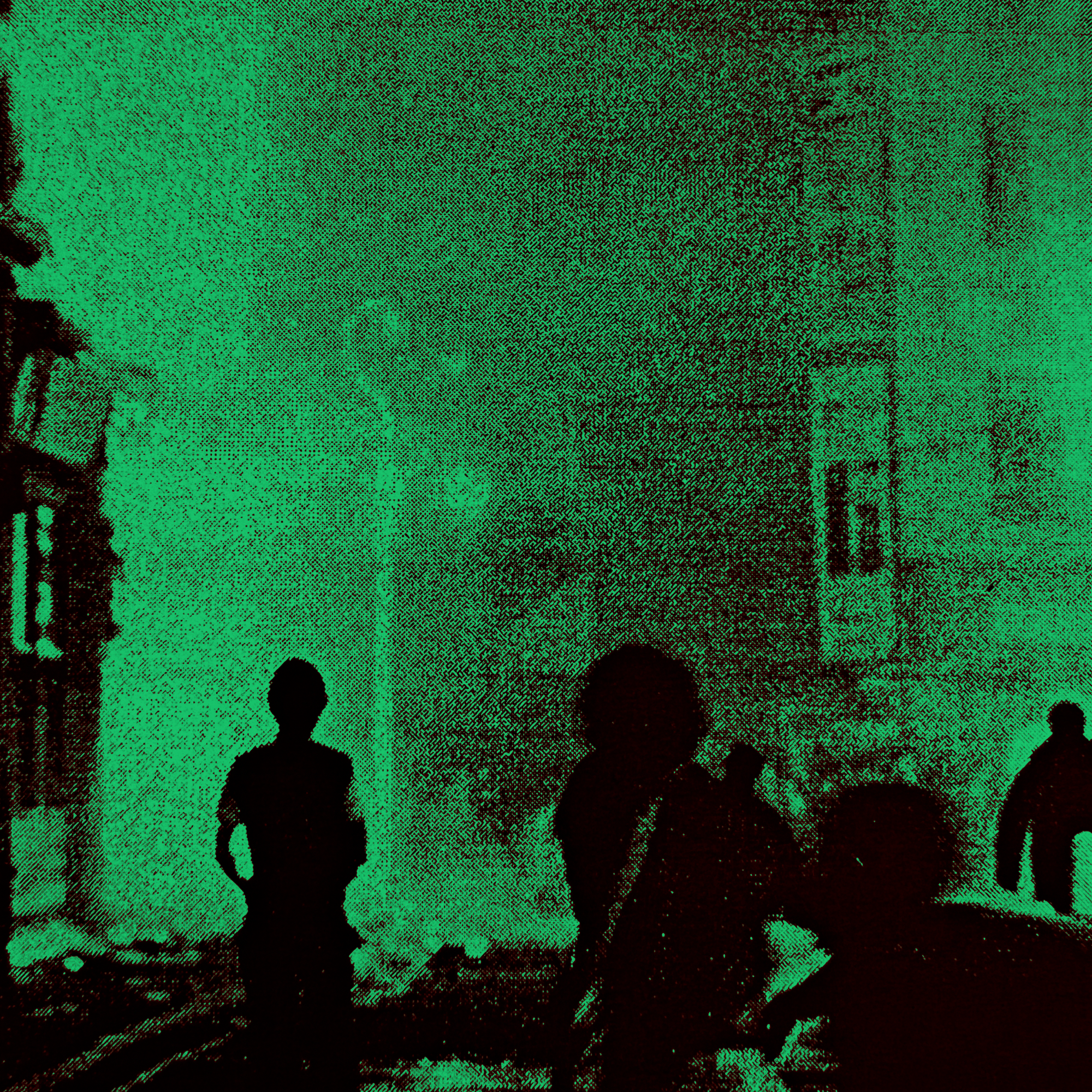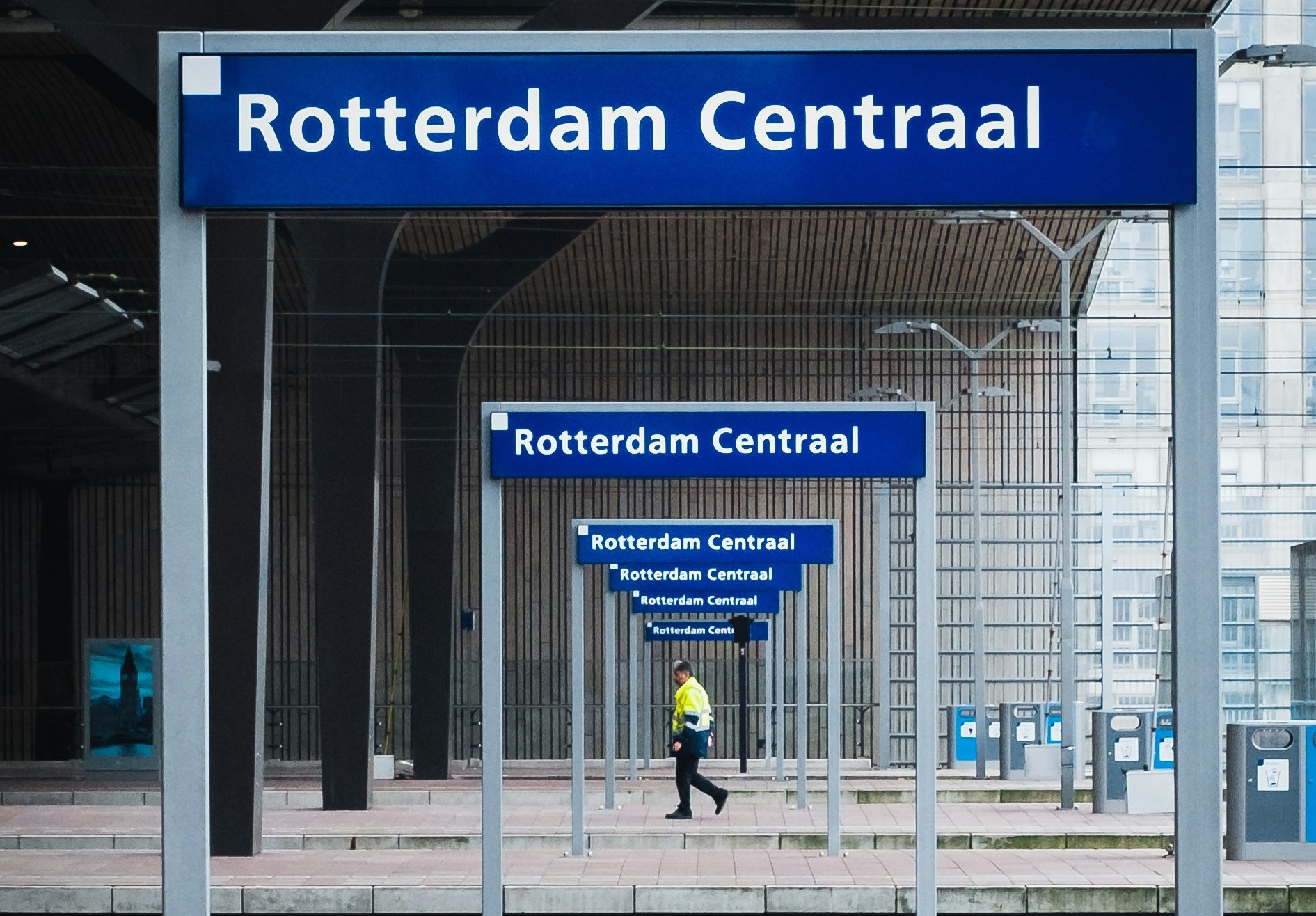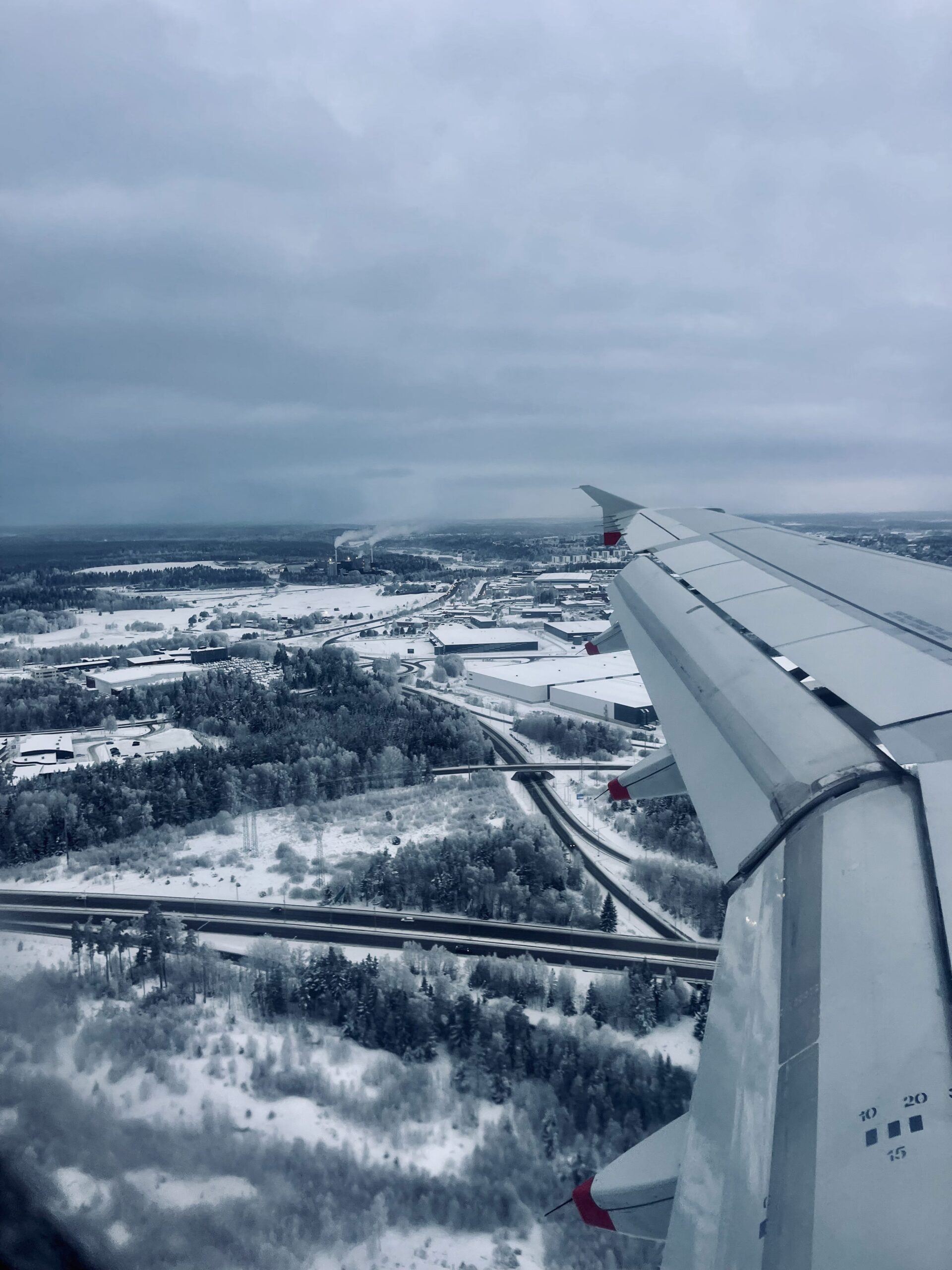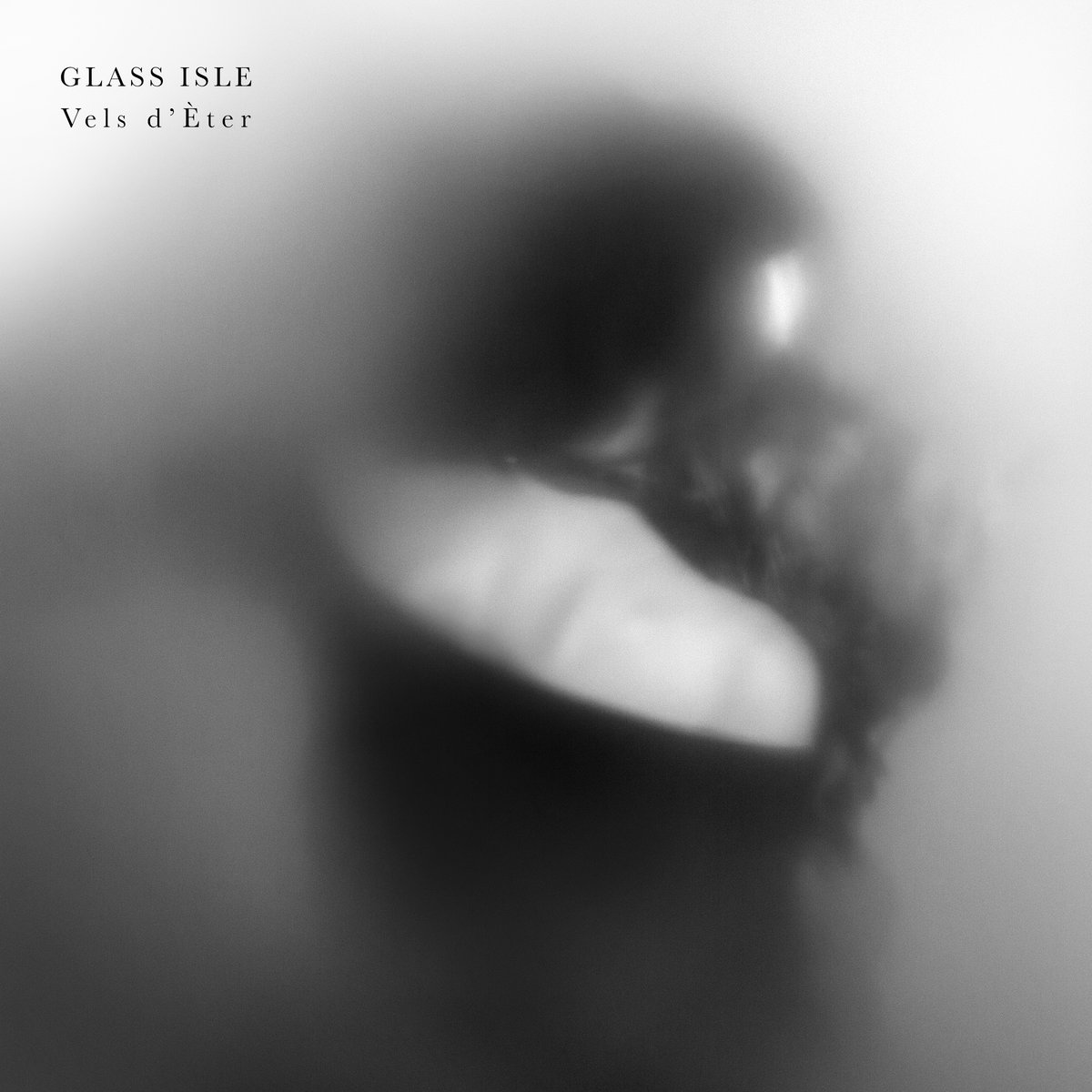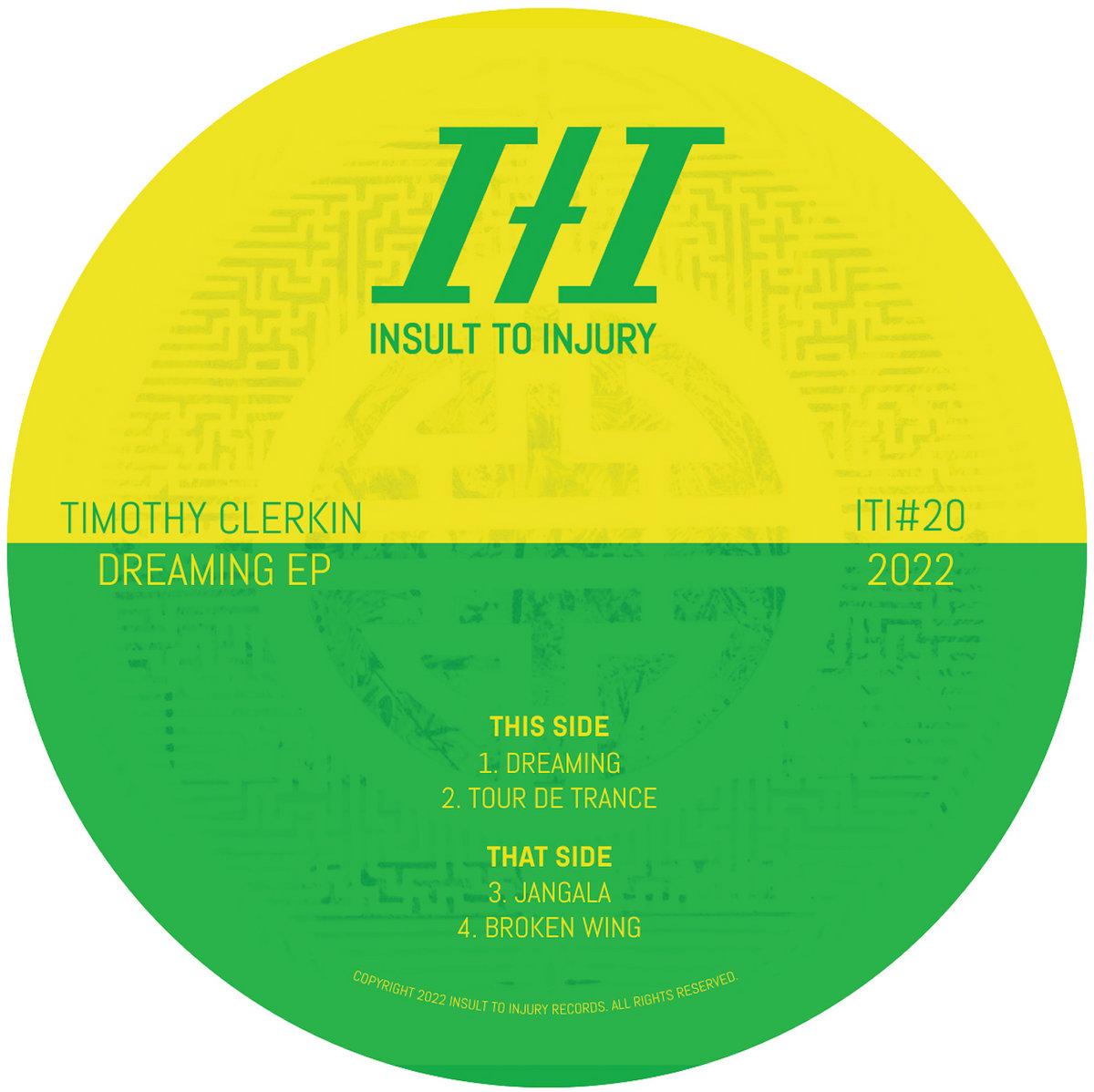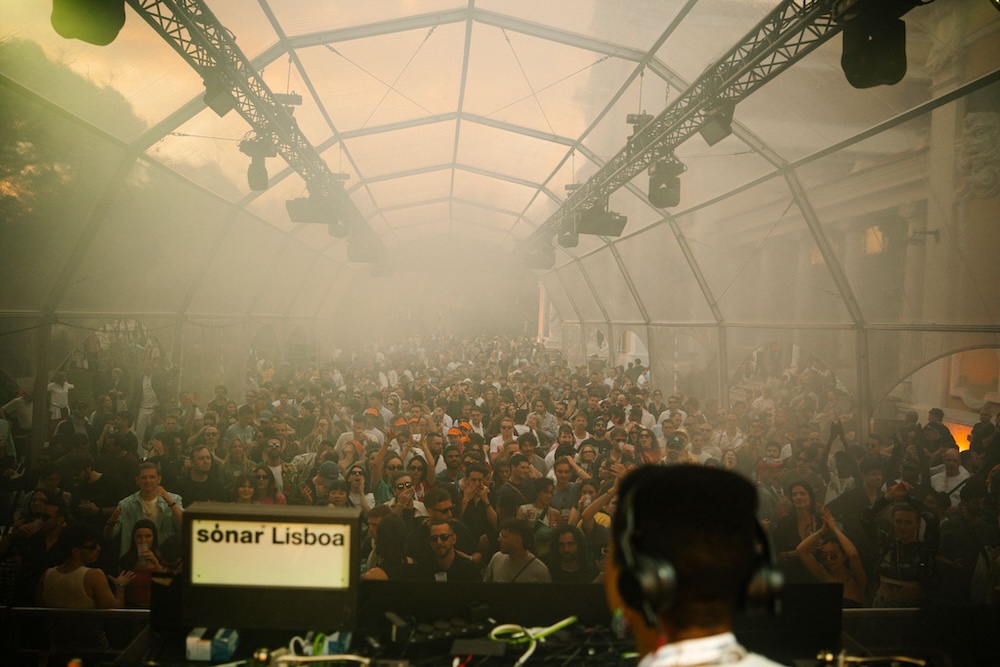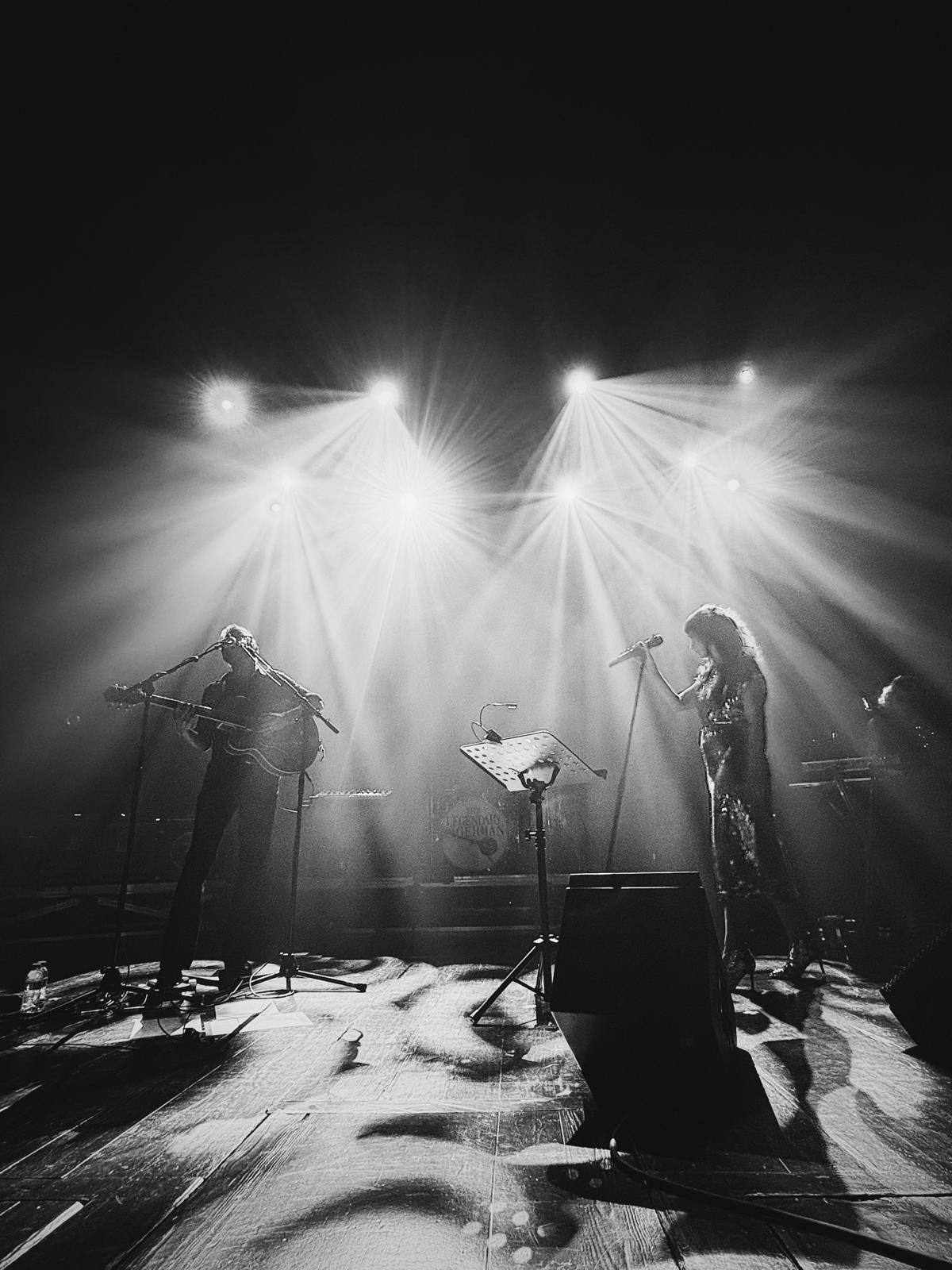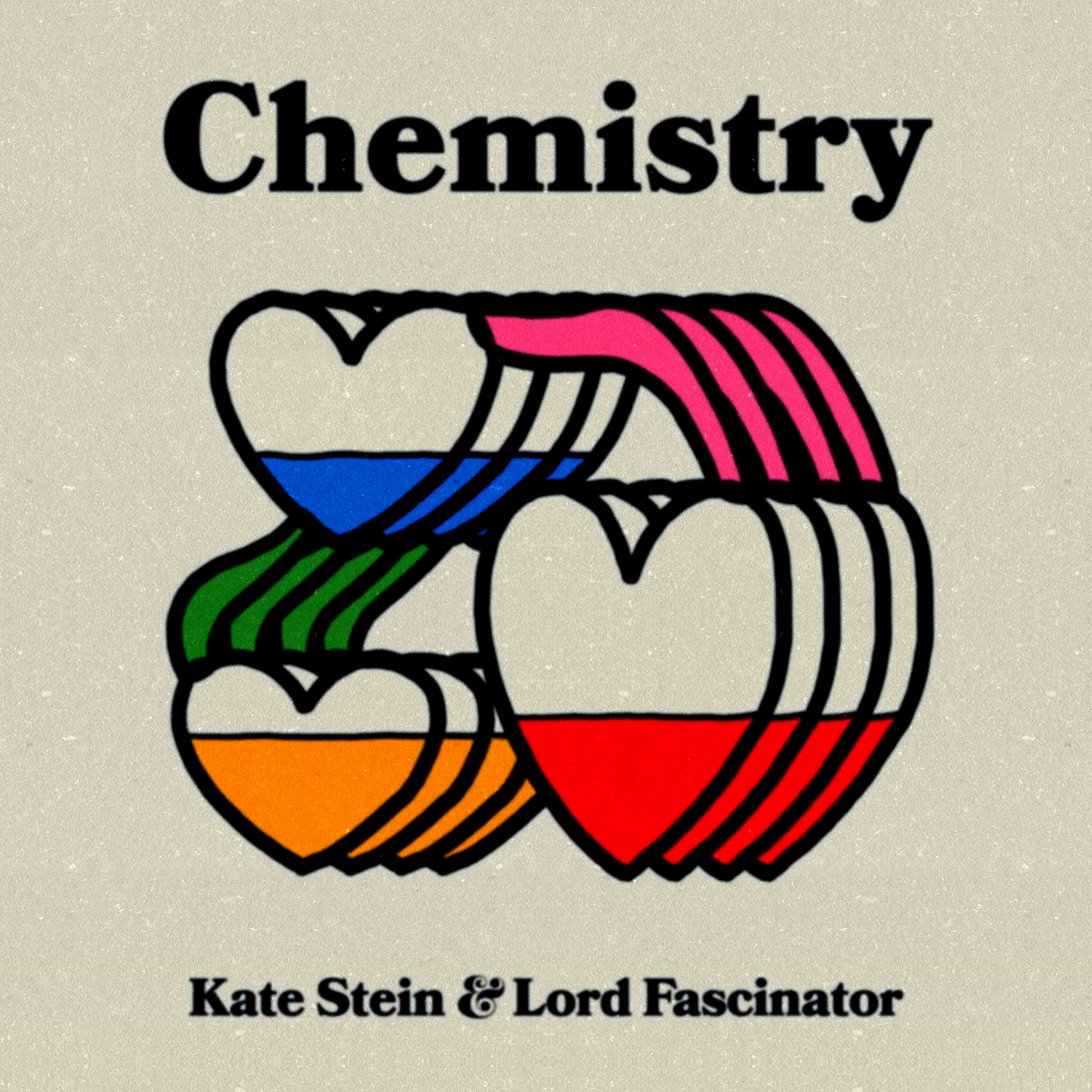Track By Track: Various Artists – Damrak
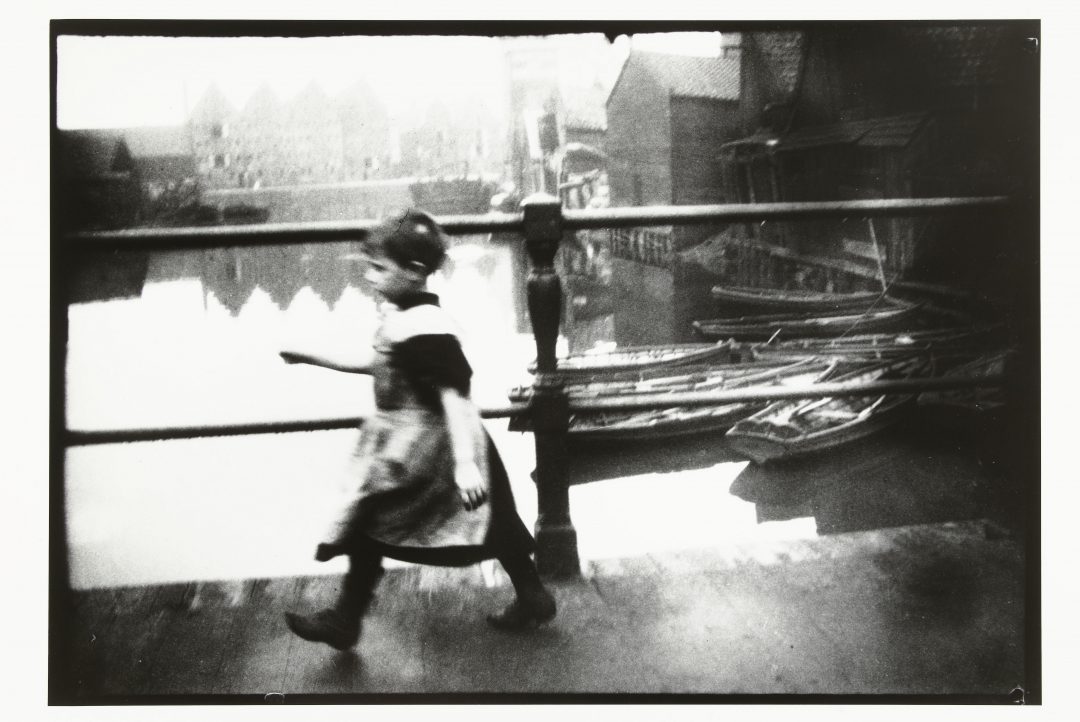
New v/a compilation Damrak is a collaboration between Fog Mountain Records and RE:VIVE – an initiative by the Netherlands Institute for Sound and Vision that aims to "bring together the worlds of archives and music to change the way people hear the past."
Some RE:VIVE projects are inspired by their findings, while some are created directly out of the archival material. The initiative's last project was Lakker's Struggle & Emerge, a conceptual work about the Dutch relationship with water and flooding that came out on R&S earlier this year.
The theme for Damrak is the city of Amsterdam and its many contradictions. Using archival field recordings and TV broadcasts to explore issues of gentrification, culture and identity, each track is its own impression of the city and its source material.
You can listen to/download the whole record below, and also read each artist's notes on how they approached the project. And if you're keen to delve in more, you can buy a companion photobook that takes the project to a deeper level.
Swarm Intelligence – 'NSDM-Werf'
Sampling and field recording plays a big role in how I make music. My field recorder travels with me everywhere, and I use it like most people use a camera, to capture memories. These sampled memories are of course mashed and mangled into something new. Working with this archival material was really therefore particularly weird as the memories and stories were someone else's. I constantly found myself imagining the lives they had and what things must have been like.
When Gregory from RE:VIVE showed me a bunch of old photographs of the shipyards and told me about the history, I knew this is what I wanted to write about. I tried to meld together the odd collection of street sounds, sirens, bells and old radio recordings that had caught my ear into a piece that embodied the sheer scale of these towering ships along with the colossal machinery needed to build them. I also wanted to capture the events surrounding the NDSM Werf – economic boom, a disastrous fire, and the shipyards' eventual demise.
ZES – '‘t IJ'
For the RE:VIVE Damrak project I got a sample pack with 10 samples. A lot of them were snippets of mechanical sounds from both the Amsterdam Metro and the IJ ferries. The harsh, industrial qualities that these samples had sparked my interest because it would be an incredible challenge to create a warm sounding analog sounding track with them.
The theme and story I imagined for my track is to be stranded alone at night, 50 years ago, on the shore of the IJ water and seeing nothing but fog and a few distant flashes of light from buoys. In the distance you slowly hear a clunking sound coming your way, it’s the ferry. As it get’s closer you hear the engine rumbling compressors hissing before you step on board to join the crew of the ferry on board in the engine room and the ferry sets off on the journey across the IJ. (The kicks are created by distorting, pitching and compressing a recording of a race-car passing by at the end of the “Pinksterdrukte” recording f.y.i.) At one point you leave the engine room to see the view on deck as the engine rumble slowly blends into a demonic melody. When you reach the other side of the IJ and step off the ferry, you look back at the ferry setting off on the wayward journey as you see it vanishing slowly in the thick layer of fog.
The project was a huge challenge for me but I think that because I received only 10 samples and eventually created the entire track with them, my creativity was triggered in a new way. Looking for every possible way to shape a sound or recording into something useable for the track. Creating kick sounds from race-cars, creating an apocalyptic melody from an old church organ, using sounds of an old compressor braking system of the Amsterdam metro for percussion and hihats and stretching out vocals of the Dappermarkt to create dreamy soundscape components, each part of this project was incredibly cool to do.
PYUR – 'Nenuphar'
Nenuphar means white water-lily, which I think is a matching metaphor for the City of Amsterdam. The water-lily has its roots deep in the water and right on the surface it gently unfolds its whole beauty. Working with historical recordings, I started to think about time traveling. For my track intro I used bird samples, which I stretched and pitched down quite a lot. Suddenly this slow melancholic melody emerged, that reminded me of a muffled choir. I imagined, that in the zoomed-in, deep voices of the birds, they sang about a time when Amsterdam didn't exist yet. The land was raw and surrounded by water. A humming of life among the swaying reeds. Wild animals were roaming about, while early tribes of humans evolved on the grassy landscape. I got sucked into an ancient dream, led by tribal rhythms into a past of rituals, hunting and gathering. I got a glimpse of the roots of our water-lily. Then I started to come back, traveling forward in time, witnessing impressive growth and beauty. Suddenly I breached through the water surface, to the NOW. I looked around me and realized, that it's all still there, just with a slightly changed face.
Avondlicht – '7 Augustus'
7 Augustus, or August 7, is simply a date I had a beautiful day in Amsterdam on which I felt myself bloom again since a while. I had been working on the track for several weeks, mostly sound design of individual elements, but after this day I started discovering an analogy between my personal life and the RE:VIVE project. I started to compare my own memories and experiences to the the collection of samples Gregory from the Netherlands Institute for Sound and Vision had send me.
By using old memories and experiences, or parts of them, which weren’t necessarily connected before, they were automatically placed in a new context in which their function got redefined. And this is what made me feel alive again. Quite an abstract line of thought, which can be simply explained by the following example. It’s like the difference in having a coffee at home or when traveling; basically it’s the same action, but due to the different context this action is placed in, the function of having that coffee slightly changes. When abroad, I enjoy having my coffee more than when at home and makes me relive emotions of joy due to having that coffee, while at home I might take this more for granted.
The same goes for this track; by cutting, editing and combining samples, they are placed in a new context in which every sample serves a different purpose which brings the old sound material back to live.
Arad – 'Electrischecentrale Sirene'
Arad Electrischecentralesirene from Arad Music on Vimeo.
The sample that I chose for this piece is a recording of a siren at an electricity plant in Amsterdam.
I’ve always been obsessed with air raid sirens and very loud artificial horns. I’ve always found it fascinating, the way they fill the air and disseminate about the surrounding landscape, filling them up like viscous tonal liquids. This obsession is also related to my love of glissando string sounds and their presence in traditional folk music from all over the world like the Mongolian horse fiddle, for example.
For me these air raid sirens and outdoor electronic tones are like gigantic slow laments by otherworldly technologies, mourning the passing of things unknown or unseen to us. The track was created procedurally by creating a system that scanned images of the Amsterdam docks and then triggered a random note from a selected scale based on the brightness of all the pixels in that line being above or below a certain threshold.
I really wanted to make the video and the music to be created by each other, dynamically linked and a generative composition. I wanted to expand on the idea of the some other world technology singing a lament for Amsterdam and other Dutch cities bombed during WW2.
Cocktail Party Effect – 'Reiger'
Field recordings are something I really enjoy working with, even in my own music I’m using found sound recordings I have done. But to work with found sounds from someone else is a very different matter. The process of this track was a real rollercoaster of me against time, I was leaving for my trip to Japan and I had 7 days to make a track out of hours and hours of recordings. It was a project I really did not want to pass up so I made it my mission to put the whole “sleeping” thing on the back burner and make coffee and Ableton my friends.
The first day I got the stems I put all the fields into Ableton with a spectrum analyser and listen to them all noting down sounds I really liked and sounds that showed a nice frequency response. Cutting the sounds out, I did my normal process of organising the parts into different elements “drums” “pads" “melody”. It was hard as there was so many sounds that were amazing.
A few times working non-stop until I could hear my flat mates' morning alarms go off then I knew maybe it was time to go to bed. After 4 days I got the bare bones of the track done then after that 2 more days I finished the mixing and polished the parts off.
All to of the granular sounds came from me putting the audio into my modular systems (mutable instruments clouds + Intellijel rainmaker) and max for lives granulator to create a lot of happy accidents. The melody was made from an ambulance siren recording and the drums from a mixture of a lot of the recordings.
Mill Burray – 'Casual Error'
For my track short samples are cut out from recordings of the most alive places in Amsterdam, where there is the biggest concentration of people, like central station, restaurants, cafes, bike paths etc. Metallic sounds of the bikes and cyclist in motion ringing bells build the foundation for this track. However, the base element which made the creative process begin, was a metal beat with the whistling cut out from one of the recordings from an old restaurant located Central Station. Some of the samples are extended and granulated, another ones are processed only a little bit so that you can still hear the city life.
The tittle came from the Amsterdam photo collection we went through. The images which complement the track show unusual looking situations situations, which actually feel like at the time the photos were taken it was totally normal. That is why they are named ‘casual errors’.
Born In Flamez – 'And The Algorithm Cried'
When I first heard the sounds on the archive I was immediately smitten: I remember saying to my partner: it won't need much work, it all sounds like music already. Most of the industrial noises had their own rhythms – a certain sound that probably influenced all the pioneers of electronic music when they came home from the bustling streets…
In the end I spent much more time on it than I initially thought, even though the idea for the song came together pretty quickly, within a few days I would say. I got stuck at some point when I realized I couldn’t go about it the way I usually work on music – e.g. I couldn’t just add this kind of pad I always use and that makes everything sound really smooth – instead I had to work with the constraints of making a track from street noises basically. But the same constraints that made me struggle also liberated me in other ways, as in the end I did something I have never done before: a completely sample based track, without vocals, without an actual bassline. I had to build a fundament for it, that I wouldn’t have usually built. A kind of rhythmic concept maybe. I got to experiment and learn a lot doing this – as I had to find new techniques of manipulating samples and there is certainly a bunch of sounds and production techniques I will be using in the future.
Lemontrip – 'Bolo'
I took my inspiration from the neighbourhood I live in, which is Bos & Lommer in Amsterdam West. It is really diverse and has big contrasts. The vibe is laid back and there are people from all sorts of backgrounds. It is beautiful but also has a dark history, for instance with of the Vluchtkerk (Refuge church). The Vluchtkerk used to be a church where illegal immigrants would hide. The riot police would sometimes go there as well. You can imagine the human dramas that took place there.
The track consists only of tram samples. I chose them because I live next to a tram station that goes straight to Damrak and it always reminds me of that place I don't really like, but which has a lot of history. The samples provided have a lot stories attached to them which instantly gave the track character. I tried to imagine how it would be to be lost in this neighbourhood, at night, with nobody on the street to ask for directions. I imagined how you would wander and what experience a stranger would have. I wanted to translate the feeling of being alone in a strange city into the track.
I really enjoyed making this project. At first glance all the tools provided seem so limited, but as you start to dig deeper you'll find that it's a real treasure to work with. I was provided 12 samples out of the 120 by mistake but never had the feeling that I needed more; I just had to deal with it.
Know V.A. – 'Nieuwmarkt'
First off we were invited by RE:VIVE to Hilversum to get an exclusive tour through the collection held by Beeld & Geluid. The tour took us to special preservation rooms where even the employees aren't normally allowed. So it was a treat for us as well as for the tour guides. We got a brief but complete history in recording sound and playing them back throughout the last century.
In the second part of the day we got the chance to dig through the given sample pack in one of the studios on location.
To find our way in this jungle of recordings we just randomly picked some sounds that looked promising and decided that we needed to extract some basic tools; kick, bass sounds, percussion and so on. With some tips & tricks we created a sample pack of our own with all kinds of percussions and bass sounds. For instance, if we could find a noisy recording we could extract a kick out of it. A band of noise represents all frequencies, so if you filter and boost specific frequencies, what’s left over can give you a decent kick.
Over the next three studio sessions in Hilversum we gradually started building our track with the sample pack we had. We put specific stretched parts of the recordings in samplers and created instruments and added our signature sound effect on it.
Halfway we realised that coincidentally we had grabbed a lot of recordings that revolved around struggle and protest and it matched the dark and desperate atmosphere we had been building. At that point the protests against the building of the subway became the central theme. The subway project resulted in the demolition of old folk neighbourhoods and subsequently the rehousing of a lot of people. The aftermath is still felt today, as the Nieuwmarkt area is now the most ugly and soulless part of the centre.
The first 10 minutes of our story illustrates the struggle between the protesters and the government. The intensity of these encounters is something we don't see any more in the Netherlands. Protest nowadays are mostly confined by anonymously shouting your opinion on the internet and lack the collectively demonstrated during these protests so this was something we wanted to remind people of. The next 5 minutes depict the inevitable defeat of the protest, as the man in the newsreel announces the new stations of the subway line. The end leans to acceptance.
At the time the Amsterdam government had bigger plans for remodelling the centre to be more accessible for cars, 'the transportation of the future'. The stubbornness of the protesters in that time managed to obstruct these plans, something that we and Amsterdam in hindsight should be grateful of. The protesters lost the battle but didn't lost the war.











